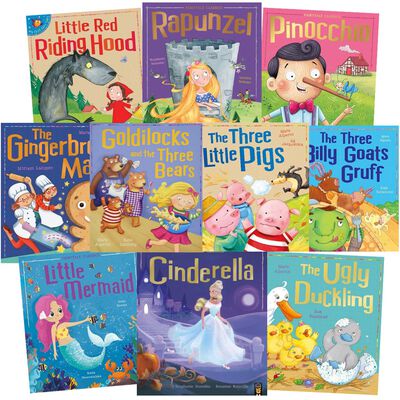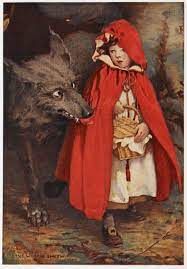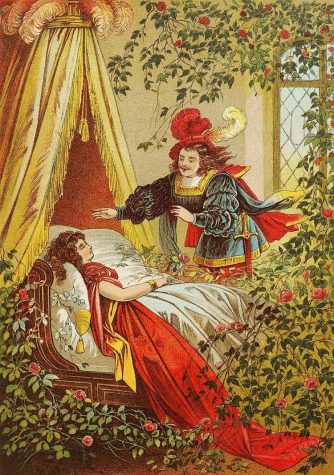
Nowadays, when we think of fairy tales, we imagine the famous Disney movies or colorful picture books portraying beloved characters, such as Pinocchio or the Three Little Pigs. Magic, love stories, and happy endings are guaranteed components of these bedtime stories that we read as children.
However, I assure you that if the original details of these stories were revealed to kids today…they would burst into tears.
Most of the popular fairy tales known to us today originated as European folk tales, passed down orally for centuries, before being written down and collected into stories by such figures as Charles Perrault and the Brothers Grimm.
These tales were all on the dark side, describing unfortunate circumstances and even more unfortunate endings, with the purpose of teaching young kids morals and lessons.
We all know the story of “The Boy Who Cried Wolf”, in which a boy yells that there is a wolf attacking his sheep in order to prank the people of his village. When the wolf finally comes, no one in the village believes the boy, thus he unintentionally leaves himself to be eaten by the wolf.
Of course, this tale serves to teach kids about the consequences of lying. Much like this story, most of our beloved fairy tales were born as lessons. I hope this fact justifies the horrors I am about to describe to you.
“Snow White and the Seven Dwarves”
 In the modern version of the story, Snow White is a beautiful fourteen-year-old girl, living in a kingdom with her stepmother, also known as the Evil Queen. The stepmother becomes angered when she realizes that Snow White has become more beautiful than her, and so she sends a huntsman to kill Snow White and retrieve her heart.
In the modern version of the story, Snow White is a beautiful fourteen-year-old girl, living in a kingdom with her stepmother, also known as the Evil Queen. The stepmother becomes angered when she realizes that Snow White has become more beautiful than her, and so she sends a huntsman to kill Snow White and retrieve her heart.
Once her attempt to kill Snow White fails, the Queen disguises herself as an old lady and poisons her with an apple. Snow White is eventually awakened by a true love’s kiss from Prince Charming. The seven dwarves then chase after the Queen, who dies by falling off a cliff. In the end, Snow White and Prince Charming live happily ever after. An innocent love story… how bad can the original really be?
Really bad. In the original version of the story, Snow White is only SEVEN years old when the Evil Queen becomes aware of her beauty. When she sends the huntsman to murder Snow White, the Queen demands him to retrieve not only her heart, but also her lungs and liver, because she plans to eat these organs once they are brought to her. All very normal behavior, for sure.
Everything else in the story stays pretty much the same, until Snow White is poisoned and the Prince finds her in the woods. He begs the dwarves to let him take her away. (Mind you, she is A CHILD, and he is a grown man!) As his servants are delivering the coffin to his kingdom, it falls, dislodging the poison apple from Snow White’s throat. Finally, the Queen attends the wedding of Snow White and Prince Charming, where she is forced to wear iron shoes that have been heated over a fire, until she dies from pain.
The moral of this story is supposed to be that kindness matters far more than beauty, since the seven dwarves take Snow White in because of her generosity and not her looks. (At least one would hope this is true! I mean, she’s seven!) However, I don’t know how kind it is to torture your stepmother to death at your wedding…
“Little Red Riding Hood”
In the modern re-telling of this classic story, Little Red Riding Hood is a girl who carries a basket of goodies to her grandmother’s house. On her way through the forest, she meets a wolf that tricks her into taking the long road to her destination.
Meanwhile the wolf races ahead of the girl, and eats her grandmother. He then disguises himself as the old woman in order to trick Little Red Riding Hood into trusting him. He eventually eats her, too, until a kindly huntsman hears the cries from inside the wolf’s belly and rescues both the girl and her grandmother.
On the other hand, in an older version of the story, the wolf dresses as the grandmother and asks Little Red Riding Hood to take her clothes off, and he throws them into the fire before he eats her. The ending is also much more macabre, as the huntsman fails to rescue the girl and old woman, and all three of them end up in the wolf’s belly. (Imagine telling THAT story to your five-year-old!)
Originally, this was supposed to be a cautionary tale against sexual predators. The story is supposed to teach young girls to avoid talking to and sharing personal information with strangers. This is clearly an important lesson, but I think I’ll stick to the modern tale, thank you.
“Cinderella”
 In the story most of us remember, a young girl named Cinderella lives with her stepmother, who scorns her and assigns her to all of the household chores. Cinderella is of course not invited to the royal ball, but the fairy godmother arrives to save the day! She creates a gown and a carriage for the girl, but she warns her that the effects of her magic will wear off at midnight.
In the story most of us remember, a young girl named Cinderella lives with her stepmother, who scorns her and assigns her to all of the household chores. Cinderella is of course not invited to the royal ball, but the fairy godmother arrives to save the day! She creates a gown and a carriage for the girl, but she warns her that the effects of her magic will wear off at midnight.
Cinderella attends the ball and gets to dance with Prince Charming himself, until the clock strikes midnight. She runs away, accidentally leaving behind her glass slipper. Mesmerized by this mysterious girl, the Prince searches the kingdom far and wide for someone whose foot will fit the slipper. He finds Cinderella, the slipper fits perfectly on her foot, and they both live happily ever after.
In actuality, the first accounts of Cinderella are similar to the modern version we know and love today. However, when the Prince arrives at Cinderella’s house, the stepmother orders the two stepsisters to cut off their toes with a knife so that the glass slipper will fit on their feet. She consoles them to this gruesome task by promising them that, when they are queens, they will never have to go anywhere on foot again.
At first, the Prince is fooled by this ruse, and he rides off to the castle with one of the stepsisters. Fortunately, some talking pigeons alert the Prince to the girl’s bloody shoes, causing him to return and discover Cinderella, the real stranger from the previous night.
The two stepsisters then attend the royal wedding, in the hopes of getting back into Cinderella’s good graces. However, they are blinded by pigeons who pluck their eyes out. Yikes!
The lesson of this story is that kindness will always triumph over selfishness. Again, this is a valuable lesson, but this tale is a pretty graphic way to deliver it…
“Sleeping Beauty”
In the version of the story that most of us know, an evil sorceress curses a princess at her birthday gift-giving ceremony. She fates the princess into piercing her finger on a spindle needle on the day of her eighteenth birthday, which will lead to her death. In order to protect the little girl, three kind fairies alter the curse by causing her to fall asleep, until a man worthy of the princess wakes her up with a true love’s kiss.
In an attempt to prevent all of this from happening, the king and queen get rid of all the spindles in the kingdom. Yet despite all of this, the princess pricks her finger anyway and falls into a deep sleep. A hundred years later, a handsome prince finds the sleeping kingdom, fights off an evil dragon and wakes up the Sleeping Beauty.
Okay, so now it’s time to buckle in, because there are two equally disturbing original versions of this tale.
In one version, the prince finds a nude girl, who is deeply asleep, and he cannot resist the urge to have sexual relations with her comatose body. He impregnates her with a child, who grows and is born while she is still asleep.
The newborn baby accidentally bites off the princess’ finger, confusing it for her breast. This dislodges the needle with which the princess pricked herself, so she wakes up with a baby on her lap and the prince now long gone. Not as romantic, huh?
In another horrific version of this tale, a king from a faraway kingdom finds the sleeping beauty and impregnates her with twins. Once the queen finds out about this, she orders the two babies to be cooked and served to the king as punishment. However, the cook cannot bring himself to do this horrid task, and he serves the king lamb instead. I think I’ll opt for the salad…
Surely this version of the story won’t put YOU to sleep!
The lesson of this story is supposed to be that true love cannot be rushed, since it takes over a century for a man to come along and save the sleeping beauty. Another message here is that even the worst evils can be overcome by love.
But I’m not sure how either of these lessons apply to the original versions of the story, and why there was a need to make them THIS horrific. If anything, I think this tale shows how men have always felt entitled to take away a woman’s autonomy over her own body, and it confirms the misogyny that has existed throughout human history. Why did a MAN have to save the sleeping beauty in the first place, especially without her knowledge or consent?
Can’t sleep anymore? Neither can I.
Old fairy tales used scare tactics to teach children helpful life lessons, but at least the modern versions of these stories provide a cushion to reality, without masking its horrors completely.
Personally, I think I’ll stick to the Disney versions when I have kids of my own.
Sleep tight, Nitros!











